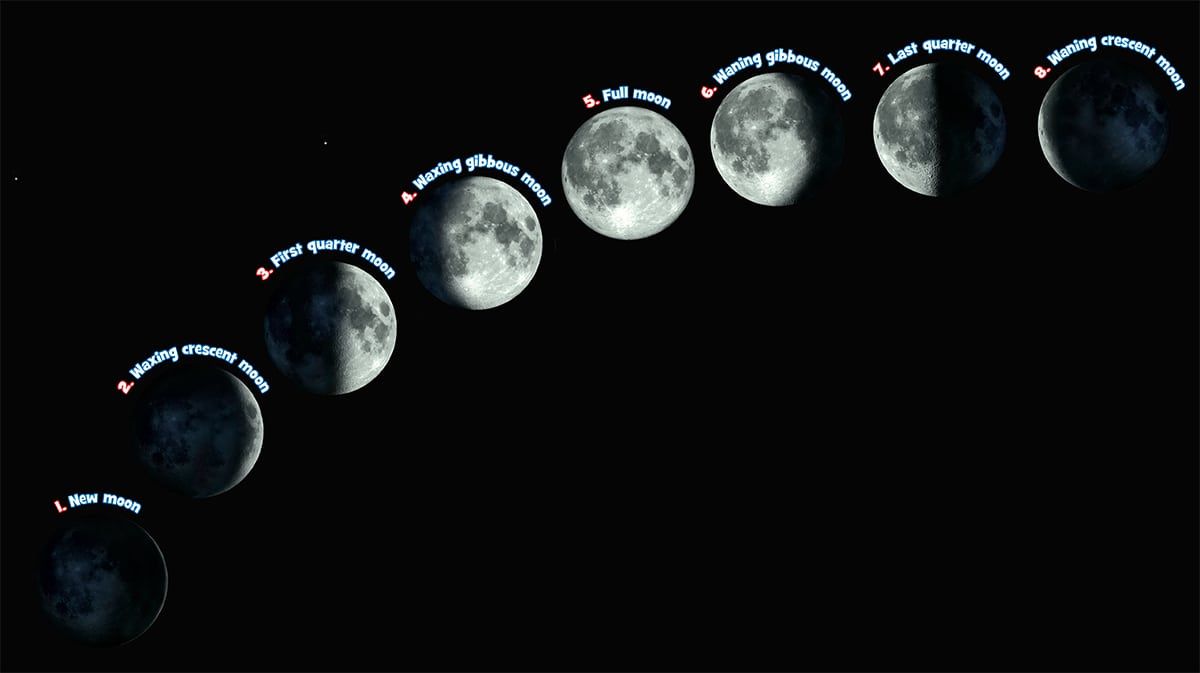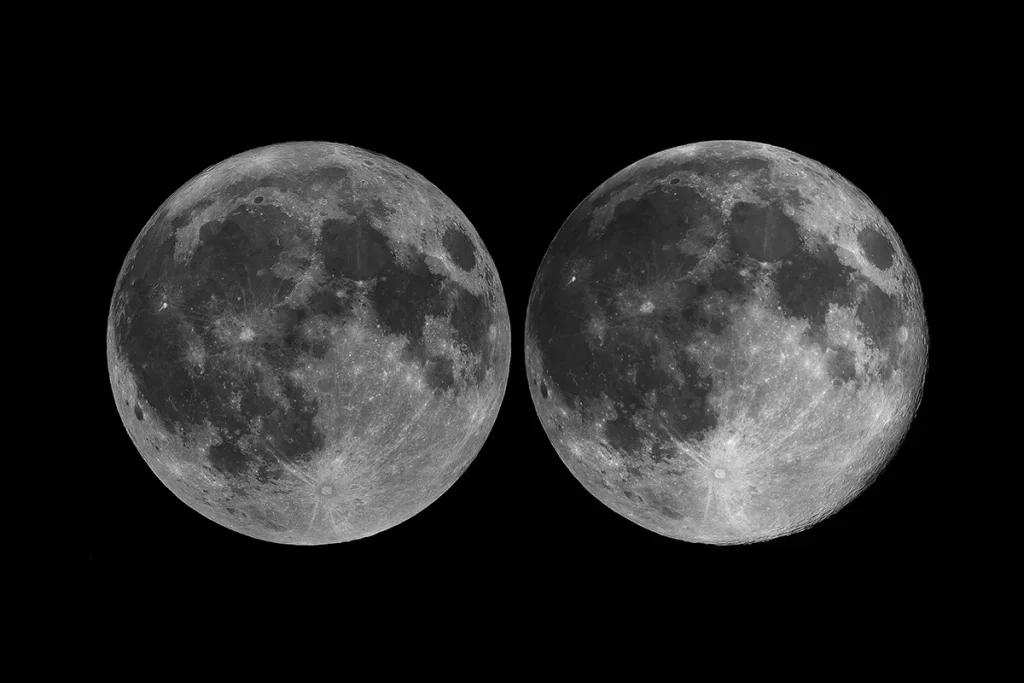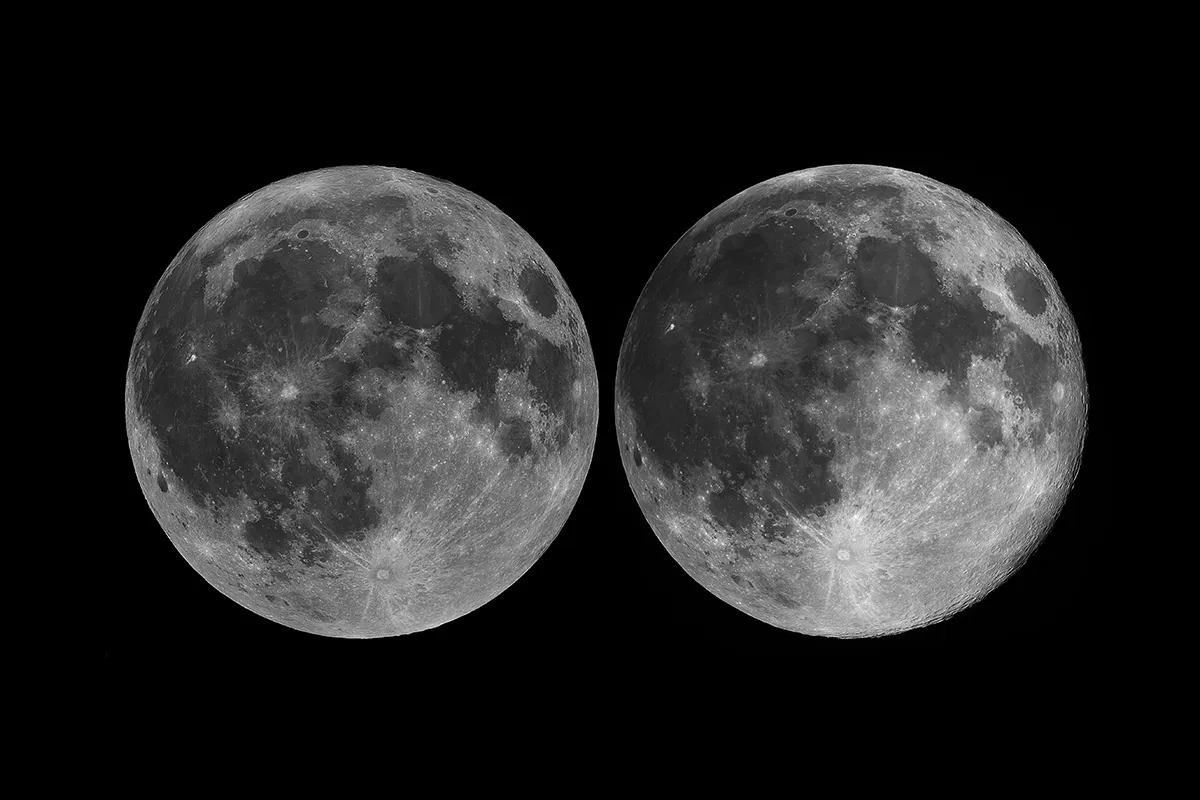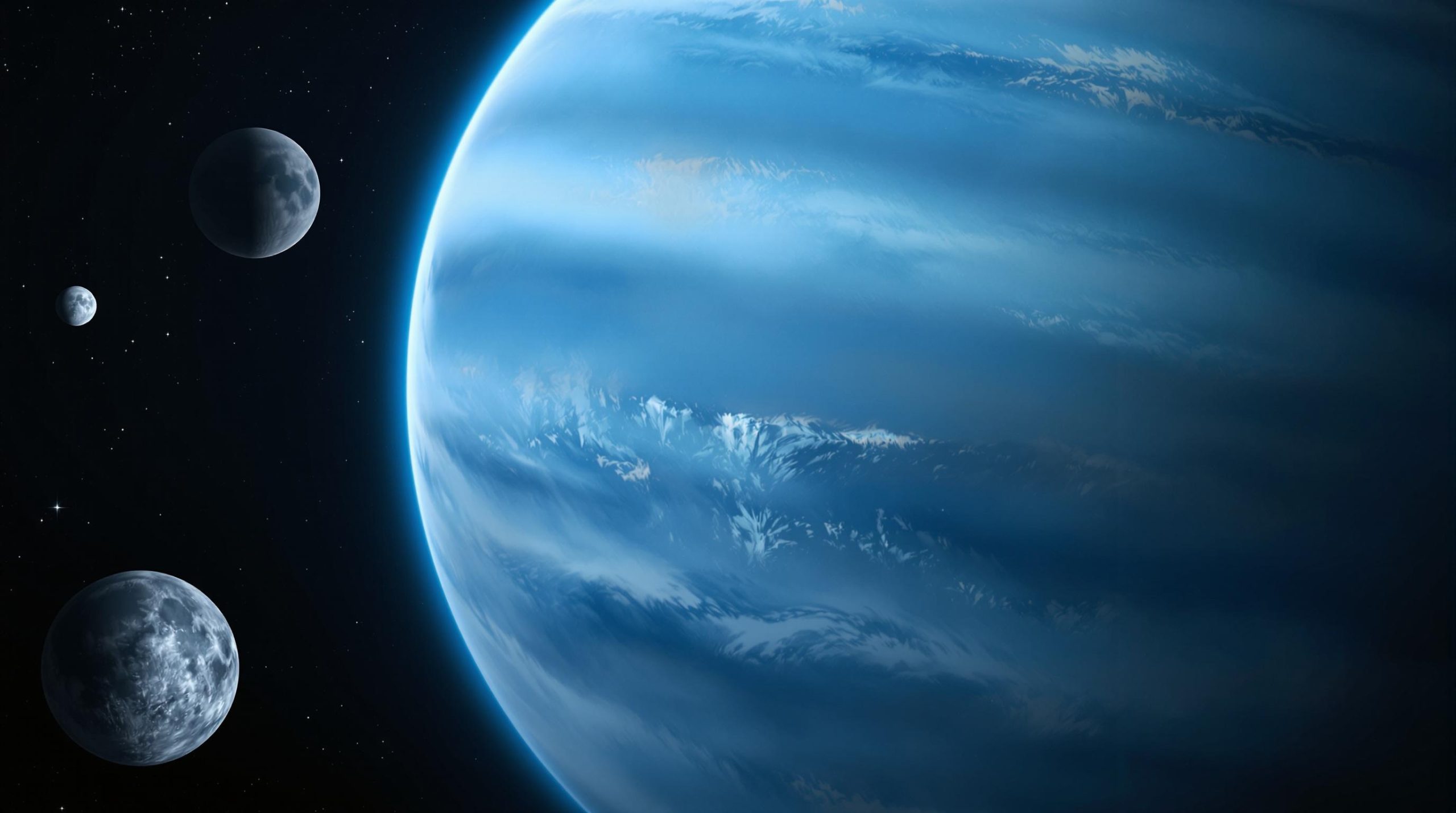Have you ever looked up at the night sky and noticed that the Moon never looks quite the same from one night to the next?
Sometimes it’s a perfect glowing circle, other times just a slim crescent, and occasionally it vanishes entirely.
This constant change has fascinated people for thousands of years — inspiring calendars, myths, and even human exploration.
But scientifically speaking, the reason is both simple and beautiful: it’s all about the Moon’s phases.
In this guide, Spaceyv explains why the Moon looks different every night, what each phase means, and how you can easily track the Moon’s changes from your backyard.
🌙 What Are Moon Phases?
The phases of the Moon describe how much of the Moon’s illuminated side we can see from Earth.
As the Moon orbits our planet, sunlight hits it from different angles. We always see the same side of the Moon (because it’s tidally locked), but the amount of sunlight reflecting toward Earth changes.
In other words:
The Moon doesn’t produce its own light — it reflects sunlight, and the visible portion changes as it moves around Earth.
This cycle of changing shapes repeats roughly every 29.5 days, known as a lunar month or synodic month.
🌑 The 8 Main Phases of the Moon
There are eight key phases in the lunar cycle.
Let’s break them down one by one — how they look, what causes them, and when to see them.
| Phase | Appearance | What’s Happening |
|---|---|---|
| 🌑 New Moon | Invisible | The Moon is between Earth and the Sun; its lit side faces away from us. |
| 🌒 Waxing Crescent | Thin sliver on right side (in Northern Hemisphere) | Sunlight starts to illuminate the Moon after the new moon. |
| 🌓 First Quarter | Half illuminated | The right half is visible; Moon is a quarter of the way through its orbit. |
| 🌔 Waxing Gibbous | More than half illuminated | Light continues to grow as the Moon approaches full. |
| 🌕 Full Moon | Completely illuminated | Earth is between the Sun and Moon; the entire near side is lit up. |
| 🌖 Waning Gibbous | Begins to shrink | Light starts to fade after the full moon. |
| 🌗 Last (Third) Quarter | Half illuminated (opposite side) | The left half is lit; Moon is three-quarters through its orbit. |
| 🌘 Waning Crescent | Thin sliver on left side | Only a small part remains visible before the next new moon. |
Each phase flows seamlessly into the next — and if you watch the Moon every night, you’ll actually see the transformation happen.
☀️ The Role of the Sun, Earth, and Moon
To understand why the Moon looks different, picture this simple geometry:
-
The Sun always illuminates half of the Moon.
-
The Moon orbits Earth once every 27.3 days.
-
We see only the half of the Moon that faces Earth.
As the Moon moves around us, the angle between the Sun, Earth, and Moon changes. This shifting angle changes how much of the illuminated half we can see — creating the phases.

👉 Imagine:
-
During a New Moon, the Moon is between Earth and the Sun. The bright side faces away from us — so it disappears into the sunlight.
-
Two weeks later, during a Full Moon, Earth is between the Sun and Moon — so we see the entire illuminated face.
That’s it — one graceful orbit, one luminous cycle.
🌗 Why Does the Moon Look Different Each Night?
Because the Moon moves about 12–13 degrees around Earth every day, its position and appearance change nightly.
The visible differences include:
-
The shape of the illuminated area (crescent, half, full, etc.)
-
The position in the sky (it rises roughly 50 minutes later each night)
-
The brightness, depending on how much sunlight reflects toward us.
That’s why the Moon never looks exactly the same two nights in a row.
🌕 The Science Behind the Brightness
A full Moon might look twice as bright as the half Moon — but it’s actually more like ten times brighter!
Why?
Because when the Sun fully illuminates the Moon’s surface facing us, there are no shadows. The Moon’s dusty regolith reflects sunlight directly toward Earth in a phenomenon called opposition surge.
During other phases, shadows on the lunar surface make it appear dimmer — even though the Moon itself doesn’t change color or material.
🧭 How to Identify Each Moon Phase
If you want to become a Moon-watching pro, here’s how to recognize the phases quickly:
🌑 New Moon
-
No visible Moon in the night sky.
-
Rises and sets with the Sun.
-
Perfect for stargazing, since the sky is dark.
🌒 Waxing Crescent
-
Thin curve of light, right side lit (Northern Hemisphere).
-
Visible after sunset.
-
Ideal for spotting the “Earthshine” — the faint glow from sunlight reflected off Earth back onto the Moon.
🌓 First Quarter
-
Half of the Moon is bright.
-
High in the sky at sunset, sets around midnight.
-
Excellent for observing craters with binoculars.
🌔 Waxing Gibbous
-
More than half lit, approaching full.
-
Rises before sunset, visible most of the night.
-
Brighter every evening.
🌕 Full Moon
-
Fully illuminated.
-
Rises at sunset, sets at sunrise.
-
Perfect for night photography — but not for stargazing (it washes out fainter stars).
🌖 Waning Gibbous
-
After the full Moon, the light shrinks from the right.
-
Visible late at night or early morning.
🌗 Last Quarter
-
Left half illuminated.
-
Rises around midnight, visible until morning.
🌘 Waning Crescent
-
Thin sliver before sunrise.
-
Appears low in the eastern sky before dawn.
Once you observe these over a few weeks, you’ll instinctively know which phase you’re looking at.

🗓️ The Lunar Cycle and Calendar
The 29.5-day lunar cycle forms the basis of many traditional calendars — from the Islamic Hijri calendar to ancient Chinese lunar calendars.
Historically, people used the Moon’s predictable cycle to:
-
Track time for agriculture and festivals.
-
Determine tides and seasons.
-
Plan navigation and rituals.
Even today, terms like “month” come from “Moon.” That’s how influential lunar cycles have been in human life.
🌕 Why the Same Phase Doesn’t Look Identical Every Month
You might notice that even the full Moon doesn’t always look exactly the same — sometimes it’s larger or higher in the sky.
That’s because of the Moon’s elliptical orbit and tilt.
Factors that change the appearance:
-
Distance from Earth (Perigee & Apogee)
-
The Moon’s orbit isn’t a perfect circle.
-
When it’s closest (perigee), it looks slightly bigger and brighter — that’s the Supermoon.
-
When it’s farthest (apogee), it appears smaller, sometimes called a Micromoon.
-
-
Atmospheric Effects
-
When the Moon is near the horizon, it looks larger due to the Moon illusion, not because it’s physically bigger.
-
Earth’s atmosphere scatters light, tinting the Moon orange or red during moonrise.
-
-
Seasonal Tilt
-
The Moon’s path changes slightly each month due to Earth’s tilt, so its rise and set positions vary through the seasons.
-
🌈 Why Does the Moon Change Color?
Sometimes the Moon glows orange, yellow, or even red. This isn’t a change in the Moon itself — it’s caused by Earth’s atmosphere.
-
When the Moon is low, its light passes through more air, scattering blue wavelengths and letting red/orange light through.
-
During a lunar eclipse, the Earth blocks sunlight but refracts red light into its shadow, painting the Moon a copper-red hue — the famous “Blood Moon.”
So, color changes are illusions created by the atmosphere — not by the Moon itself.

🌍 The Connection Between the Moon and Earth
The Moon’s phases don’t just affect how it looks — they influence Earth in subtle but powerful ways.
🌊 Tides
The gravitational pull between the Earth and Moon causes ocean tides.
-
During New and Full Moons, Earth, Moon, and Sun align, creating spring tides (strongest tides).
-
During Quarter Moons, the gravitational forces counteract each other, creating neap tides (weakest tides).
🌱 Human and Animal Behavior
Some studies suggest that moonlight can influence:
-
Nocturnal animals’ hunting patterns.
-
Coral spawning cycles.
-
Even human sleep quality — though evidence is mixed.
📱 How to Track the Moon Easily
You don’t have to guess which phase you’re seeing.
Use free astronomy apps to track the Moon’s position and illumination daily:
-
Stellarium
-
Sky Guide
-
Moon Phase Calendar Plus
Or simply follow Spaceyv’s Moon Phase Calendar, where we update the phases for every month.
🌕 Fun Lunar Facts You’ll Love
-
The same side of the Moon always faces Earth — the far side was first seen only after the 1959 Luna 3 mission.
-
A “Blue Moon” refers to the second full Moon in a calendar month — not its color.
-
A “Supermoon” can appear up to 14% larger and 30% brighter than a Micromoon.
-
The Moon’s gravity is 1/6th of Earth’s — that’s why astronauts could bounce easily on the surface.
-
Without the Moon, Earth’s axial tilt would wobble wildly, causing extreme climate changes. The Moon helps stabilize our planet.
🌝 Observing the Moon Like a Pro
To make the most of your Moon-watching experience, try these expert tips:
1. Use Binoculars or a Small Telescope
You’ll see:
-
Craters like Tycho and Copernicus
-
Mountain ranges such as the Apennines
-
The dark “seas” (maria) made of ancient lava plains
2. Best Time to Observe
The first quarter and last quarter phases are ideal — the side lighting creates dramatic shadows that reveal surface texture.
The full Moon, while bright, looks flatter because sunlight hits it head-on.
3. Track the Moonrise and Moonset
You can use an app or website to find exact times — great for photography or time-lapse shots.
4. Try Lunar Photography
A simple smartphone on a tripod can capture amazing details.
Experiment with low ISO and short exposure times to avoid overexposure.
🌔 The Moon and Human Culture
The Moon has guided humans spiritually and culturally across every civilization:
-
Egyptians worshipped Khonsu, the Moon god of time.
-
Romans honored Luna and Diana, goddesses of the Moon.
-
Native American tribes named full moons (like the Harvest Moon or Wolf Moon) to mark seasonal changes.
-
In modern times, the Moon inspired everything from poetry to space exploration — culminating in the Apollo missions.
Even today, its changing face continues to evoke awe and creativity.
🌙 Summary: Why the Moon Looks Different Every Night
Let’s recap the key points:
✅ The Moon doesn’t change shape — its illuminated portion changes as it orbits Earth.
✅ The Sun’s light and Moon’s orbit create the phases we see each month.
✅ There are 8 main phases: New, Waxing Crescent, First Quarter, Waxing Gibbous, Full, Waning Gibbous, Last Quarter, and Waning Crescent.
✅ Variations in brightness, color, and size come from distance, atmospheric effects, and perspective.
✅ You can easily observe and enjoy the Moon’s phases — no telescope needed.
🌕 Final Thoughts from Spaceyv
The next time you look up and notice the Moon’s changing face, remember: it’s not magic — it’s celestial geometry in motion.
Yet even knowing the science, the beauty never fades.
Every phase of the Moon tells a story — of light and shadow, movement and rhythm, the eternal dance between Earth and its only natural satellite.
So tonight, take a moment to look up.
Whether it’s a slender crescent or a glowing full Moon, you’re witnessing a cosmic cycle as old as time itself.



